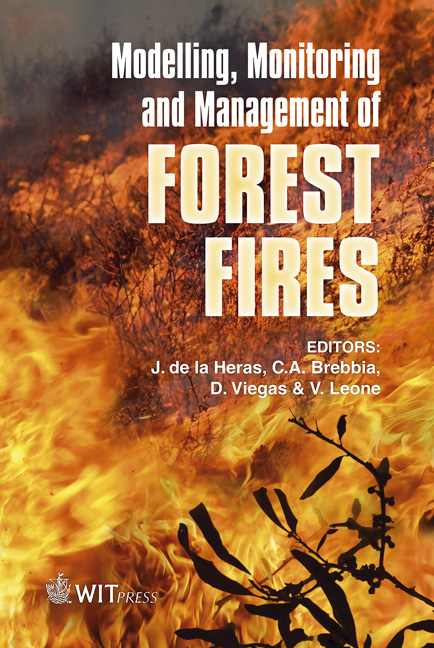In-field Determination Of Drag Through Grass For A Forest-fire Simulation Model
Price
Free (open access)
Transaction
Volume
119
Pages
7
Page Range
23 - 29
Published
2008
Size
790 kb
Paper DOI
10.2495/FIVA080031
Copyright
WIT Press
Author(s)
P. M. Kenney, T. G. Keith, T. T. Ng & R. R. Linn
Abstract
Forest-fire simulation modelers need fluid-drag data for ground vegetation; however, very little such data is to be found. Further, the gathering of such data using experimental facilities such as large flumes is time, labor, and equipment intensive. This paper presents an initial investigation of a plant-drag measurement procedure which can be carried directly to native plant communities. Instead of using large flumes and potted plants with load cells attached, this work will verify that a portable wind tunnel can be used to determine the difference in total pressure across a stand of vegetation. The total pressure difference can then be equated to the drag through that stand and a drag coefficient determined as a function of the Reynolds number. Vegetal parameters considered in determining a drag coefficient are percentage cover, fractal dimension, and lacunarity. Vorticity and flow through the plant canopy causing plant oscillation are not considered because of the limited height of the tunnel used and because of honeycomb flow straighteners used in the apparatus which destroy vorticity and alter the velocity profile. Keywords: plant drag, in-situ data collection, fractals, lacunarity, total pressure, wind tunnel. 1 Introduction The need for drag coefficient data for grasses, forbs, etc. (and the lament of the lack thereof) exists in the studies of water flow in plant-filled, open channels and cultivated flood plains awash with spring flooding [1], of wind lodging (overturning) in crops [2, 3], of soil erosion windbreaks, and of inter- and
Keywords
plant drag, in-situ data collection, fractals, lacunarity, total pressure, wind tunnel.





